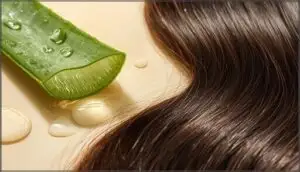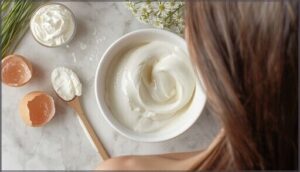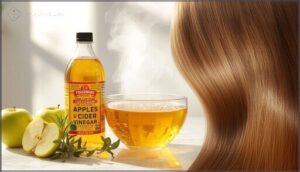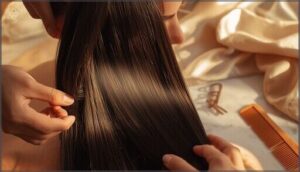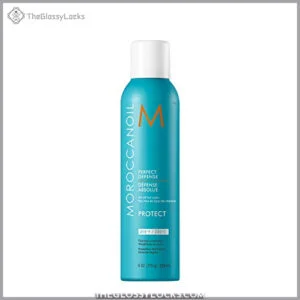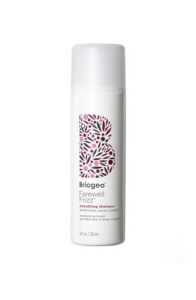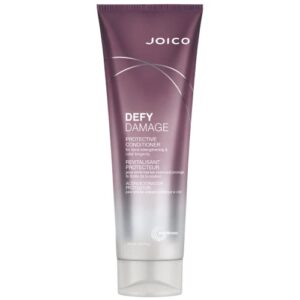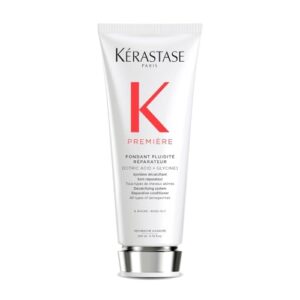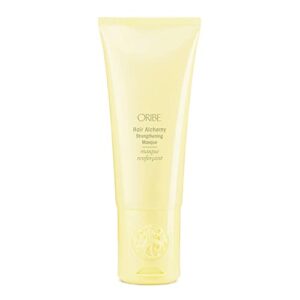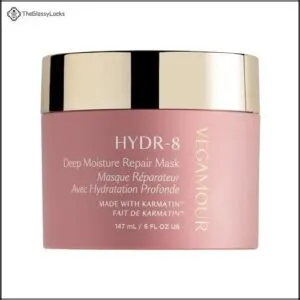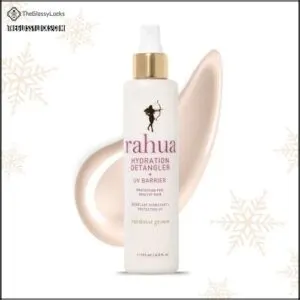This site is supported by our readers. We may earn a commission, at no cost to you, if you purchase through links.
You’re standing in front of the mirror, hair styled to excellence, when a gust of wind or a quick movement turns your sleek look into a halo of static-charged strands reaching in every direction. Flyaway hair isn’t just a cosmetic nuisance, it’s a sign that your strands are crying out for moisture, protection, or gentler handling.
Whether you’re dealing with dryness from winter air, damage from your flat iron, or breakage from aggressive brushing, the solution doesn’t always require expensive salon treatments. Your kitchen likely holds powerful ingredients that can smooth those rebellious strands, restore moisture balance, and give you lasting control over flyaways without weighing your hair down.
Table Of Contents
- Key Takeaways
- Common Causes of Flyaway Hair
- Effective Home Remedies for Flyaway Hair
- Prevention Tips for Reducing Flyaway Hair
- Styling Techniques to Tame Flyaways
- Top 10 Products for Managing Flyaway Hair
- 1. Moroccanoil Perfect Defense Heat Protectant
- 2. Briogeo Farewell Frizz Smoothing Shampoo
- 3. Ouai Thick Moisturizing Shampoo For Hair
- 4. Joico Defy Damage Hair Conditioner
- 5. Kerastase Premiere Repair Conditioner For Hair
- 6. Oribe Hair Alchemy Strengthening Masque
- 7. K18 Leave In Molecular Hair Mask
- 8. Vegamour Hydr-8 Deep Moisture Repair Mask
- 9. Tangle Teezer Detangler Brush Millennial Pink
- 10. Rahua Hydration Detangler Spray UV Barrier
- Frequently Asked Questions (FAQs)
- How do I get rid of flyaway hair?
- How do I get rid of flies in my hair?
- How to get rid of Flyaways naturally?
- How do you get rid of Flyaways & Split Ends?
- How to prevent flyaway hair?
- How do you get rid of Flyaways in winter?
- Can diet or vitamins help reduce flyaway hair?
- Does sleeping on silk pillowcases prevent flyaways?
- How often should I trim hair to minimize flyaways?
- Are there specific hairstyles that hide flyaway hair?
- Conclusion
Key Takeaways
- Flyaway hair stems from moisture loss caused by dryness, heat styling above 365°F, environmental factors like humidity and static, product buildup, and aggressive brushing that snaps strands at their weakest points.
- Kitchen ingredients like aloe vera gel, honey and avocado masks, yogurt and egg whites, coconut oil, and apple cider vinegar rinses effectively restore moisture balance and smooth rebellious strands without expensive salon treatments.
- Prevention requires swapping regular towels for microfiber alternatives, limiting heat styling while using protectants, applying hydrating masks weekly, detangling gently with wide-tooth combs starting from the ends, and protecting hair from environmental stressors.
- Professional products like Moroccanoil Perfect Defense (up to 450°F protection), Briogeo sulfate-free shampoo (48-hour frizz control), and K18 Leave-In Mask (91% strength restoration in four minutes) deliver measurable results when home remedies aren’t enough.
Common Causes of Flyaway Hair
Flyaway hair doesn’t just happen out of nowhere—it’s usually your hair’s way of telling you something’s off. Whether it’s the dry winter air, your go-to flat iron, or just the way you’re brushing, multiple factors can turn smooth strands into a static mess.
Let’s look at what’s really causing those rebellious hairs to stand on end.
Dryness and Moisture Loss
At the heart of flyaway hair lies a simple truth: dryness robs your strands of their natural weight and flexibility. When your cuticle moisture balance is disrupted—whether through environmental dryness impact, nutritional deficiencies, or frequent washing—hair lipid depletion occurs. This makes strands lighter, more static-prone, and harder to control.
Dryness strips hair of its natural weight, disrupting moisture balance and making strands lighter, static-prone, and impossible to control
Using hydrating products like leave-in conditioners can help combat dryness induced flyaways.
Thankfully, targeted hair hydration through home remedies can restore moisture and bring your hair back to life.
Heat Styling and Chemical Damage
While dryness sets the stage, heat styling and chemical treatments deliver the knockout punch. Exposing your hair to temperatures above 365°F causes protein degradation and converts keratin into a weaker form, reducing elasticity. Chemical straighteners and hair dye effects strip natural oils, while cumulative hair breakage builds with every flat iron pass.
Using a heat protectant before styling helps, but even then, heat damage thresholds matter—your strands can only take so much. Frequent treatments can lead to increased hair porosity, making it more susceptible to damage.
Environmental Factors (Humidity, Wind, Static)
Beyond the styling tools you control, environmental forces work against your hair every day. High humidity causes strands to absorb moisture and swell, disrupting the cuticle and triggering frizz. Low humidity does the opposite, stripping hair moisture and creating static buildup that makes flyaways stand on end.
Wind physically dries and tangles hair, while seasonal changes and pollution impact add cumulative stress, weakening strands and preventing flyaway hairs from settling.
Hair Type and Product Buildup
Your hair type shapes how products interact with your strands. Fine hair weighs down easily from waxy buildup, while curly hair needs richer creams that can trap residue if you’re not careful.
When product buildup coats your hair, it blocks hydration and creates the perfect storm for flyaways:
- Greasy roots with dry, frizzy ends
- Scalp irritation from clogged follicles
- Static buildup from uneven texture
Regular hair cleaning with clarifying shampoo helps reset your strands.
Breakage From Brushing and Handling
When you tug through hair tangles too aggressively, you’re snapping fibers at their weakest points. Hair breakage from brushing happens more often than you’d think, especially with wet hair or damaged strands.
Your hair manageability improves dramatically when you choose gentler detangling tips.
| What Causes Breakage | How to Minimize Breakage |
|---|---|
| Brushing from roots down | Start detangling from ends up |
| Using fine-toothed combs | Switch to a widetooth comb |
| Pulling through knots forcefully | Work gently through tangles |
| Brushing frequency that’s too high | Reduce daily brush sessions |
| Ignoring your hair condition | Use conditioner before detangling |
Effective Home Remedies for Flyaway Hair
You don’t need to spend a fortune on fancy products to tame flyaway hair. Your kitchen probably holds some surprisingly effective solutions that can smooth, hydrate, and restore your hair’s natural shine.
Here are five natural remedies you can try at home to get those stubborn strands under control.
Aloe Vera Gel Treatments
When your hair feels more static than silk, aloe vera gel offers one of the simplest home remedies for flyaway hair. This natural styling aid delivers aloe hydration benefits while smoothing frizz and baby hairs without stiffness.
Rich in vitamins and strengthening properties, an aloe vera mask improves scalp health, provides environmental protection, and transforms your hair treatment routine with effective, accessible hair care.
Honey and Avocado Hair Masks
For a deeply nourishing hair mask, blend one ripe avocado with two tablespoons of honey to create a creamy treatment packed with vitamin E, healthy fats, and moisture-locking properties. This avocado and honey mask targets damage repair while delivering enhanced hydration that tames flyaways effectively.
Apply to damp hair, leave for 15-30 minutes under a shower cap, then rinse. Weekly application frequency keeps your strands smooth, strengthens the cuticle, and provides scalp benefits that reduce dryness and flakiness—making it one of the most adaptable home remedies for flyaway hair.
Yogurt and Egg White Masks
Mix two egg whites with two tablespoons of plain yogurt for a protein-rich hair mask that strengthens strands and reduces breakage. The egg whites deliver about 10.9 grams of protein per 100 grams, forming a protective barrier around your hair shafts, while yogurt’s lactic acid balances scalp health.
Apply for 20-30 minutes, rinse with cool water, and repeat weekly—70% of users report noticeable flyaway reduction within a month.
Coconut, Almond, and Argan Oil Applications
Think of these three oils as your flyaway-taming toolkit, each offering unique benefits. Coconut oil penetration locks in moisture and prevents protein loss, making it ideal for overnight masks. Almond oil provides a lightweight application for daily use, while argan oil delivers excellent heat protection during styling.
Consumer preference often leans toward argan for fine hair and coconut for deep conditioning treatments addressing stubborn home remedies challenges.
Apple Cider Vinegar Rinses
Apple cider vinegar works like a reset button for your hair’s pH balance, restoring the ideal 4-5 range that many shampoos disrupt.
This home remedy addresses flyaway hair through buildup removal and antimicrobial benefits while flattening cuticles for frizz control.
Mix 2-4 tablespoons with 16 ounces water, leave for 5-15 minutes, then rinse—your usage guidelines for smoother hair hydration and scalp pH balance.
Prevention Tips for Reducing Flyaway Hair
Once you’ve addressed the root causes and tried a few remedies, the next step is making sure flyaways don’t keep coming back. Prevention is all about adjusting your daily routine to protect your hair from the things that trigger frizz and static.
Here are five simple habits that can help you maintain smoother, more manageable hair over time.
Using Microfiber Towels or Cotton T-Shirts
When you’re fighting flyaway hair, swapping your regular towel for a microfiber towel or cotton t-shirt makes a real difference. These materials absorb moisture without the harsh friction that roughens your hair cuticle, offering better damage prevention and frizz reduction.
You’ll notice less breakage, smoother strands, and improved hair health. Plus, microfiber towels dry faster, providing hygiene benefits by reducing bacterial growth from dampness.
Limiting Heat Styling and Using Heat Protectants
Beyond using the right towel, limiting heat styling is your next big win in controlling flyaways. When you blow-dry or straighten at high temperatures, you’re breaking down the hydrogen bonds that keep your hair strong, which leads to brittleness and breakage. Heat above 300°F can permanently alter your hair’s keratin structure, reducing its elasticity and making flyaways worse.
That’s why cutting back on heat tools helps maintain moisture and reduces split ends. Always apply a heat protectant before styling—it creates a protective barrier that can reduce breakage by up to 45%. Use a dime-sized amount on hair that’s about 90% dry to prevent steam damage.
Hydrating Hair Masks and Conditioners
Once you’ve dialed back the heat, hydrating hair masks become your most powerful tool for locking in moisture. These conditioning mask treatments can increase hair moisturization by up to 6.5 times compared to untreated strands. Here’s how to make them work:
- Choose mask ingredients like argan oil, glycerin, and panthenol for maximum hydration
- Apply hydrating hair masks once weekly to avoid protein overload
- Leave treatments on for 5-7 minutes for best nutrient absorption
- Focus on natural oils such as coconut and almond for frizz control
- Select lightweight formulas if you have fine hair to prevent weighing it down
Hair mask treatments with antioxidant-rich oils restore elasticity and shine quickly, while hydrating conditioners containing behentrimonium chloride reduce static. The market’s shifting toward multifunctional products—62% of users want masks that both hydrate and repair. Application techniques matter: use post-shampoo on damp hair, then rinse thoroughly.
Usage frequency depends on your hair type, but damaged hair benefits from more frequent treatments during colder months when dryness peaks.
Proper Detangling With Wide-Tooth Combs
While moisturizing treatments build strength from within, your detangling technique shapes daily flyaway hair management. Wide-toothed combs minimize breakage by distributing pressure evenly across strands, unlike dense brushes that create friction and static.
Start at your ends and work upward in small sections—this usage technique preserves texture while supporting scalp health. The American Academy of Dermatology recommends this approach for frizz control and gentler detangling hair care that keeps flyaway hairs under control.
Protecting Hair From Environmental Stressors
Pollution damage and UV radiation strip your hair’s natural defenses, leaving strands dry and prone to static electricity. Cold weather increases hair dryness, so covering your head during winter preserves hair moisture and prevents flyaway hair from disrupting your style.
You can shield against humidity effects by applying protective hair oils before venturing outdoors—consumer trends show growing demand for anti-pollution formulas.
Styling Techniques to Tame Flyaways
Even with the best prevention routine, flyaways still happen, and that’s when your styling approach makes all the difference. The right techniques can help you smooth down those pesky strands without causing more damage or making your hair look stiff and unnatural.
Here are five styling methods that actually work to keep flyaways under control throughout the day.
Applying Lightweight Serums and Oils
Think of lightweight serums and hair oils as your secret weapon for taming flyaway hairs without the weight.
You’ll want to apply a few drops of argan or coconut oil to damp hair, focusing on mid-lengths and ends where frizz strikes hardest.
These hair products work by penetrating the hair shaft, locking in moisture while creating a smooth surface that repels static and boosts shine.
Using Hairspray and Edge Brushes
When flyaway hairs refuse to cooperate, you can spray hairspray directly onto an edge brush—not your hair—for precise control. This application technique lets you smooth baby hairs and stubborn strands along your hairline without that stiff, crunchy finish.
Look for frizz-fighting formulas with humidity-resistant hairspray ingredients, and pair them with vegan bristle brush materials for gentle, effective hair styling.
Avoiding Dense-Bristled Brushes
Dense-bristled brushes create more friction than your hair can handle, triggering static buildup and breakage that leads to flyaway hair. Switch to these expert alternatives for better hair care:
- Wide-tooth combs that gently detangle without snagging
- Mixed nylon and boar bristle brushes for smooth oil distribution
- Flexible, spaced bristles that reduce scalp irritation
- Natural bristle options that minimize static and damage
Concentrating Conditioner on Ends
Your hair ends need the most conditioning love, not your roots. Concentrating leave-in conditioner from mid-lengths down creates a cuticle moisture seal that locks in hair hydration, directly targeting dryness where it’s worst.
This strategic product use offers multiple benefits: it improves manageability by 25-35% during detangling, provides split end prevention, and offers environmental protection against daily stressors that trigger flyaways.
Air-Drying and Gentle Handling
Your blow dryer might be doing less damage than you think. A 2011 study showed that air-drying can harm hair’s internal structure through prolonged dampness.
The real culprit? Wet hair handling and towel friction cause breakage that creates those annoying flyaway hairs.
Pat gently with microfiber towels, use gentle detangling with wide-tooth combs, and avoid rubbing to prevent damage.
Top 10 Products for Managing Flyaway Hair
Sometimes home remedies aren’t enough, and you need a little extra help from proven products. The right shampoo, conditioner, or styling treatment can make a real difference in keeping those pesky flyaways under control.
Here are ten professional-grade products that deliver consistent results for taming unruly hair.
1. Moroccanoil Perfect Defense Heat Protectant
When you’re battling frizz and static, heat protectant becomes your first line of defense. Moroccanoil Perfect Defense shields your strands up to 450°F, which covers most styling tools you’ll reach for.
The argan oil benefits here are twofold—you get thermal protection plus deep hydration that fights the dryness causing your flyaways. Spray it six inches from damp or dry hair before heat styling, and you’ll notice how it doesn’t weigh things down.
At $32 for 6 ounces, it’s an investment in preventing hair damage rather than constantly repairing it.
Best For: Anyone who regularly uses hot tools and wants lightweight protection that won’t weigh down their hair or leave it feeling sticky.
- Protects up to 450°F, which covers flat irons, curling wands, and blow dryers without breaking a sweat.
- Argan oil formula adds shine and softness while defending against heat damage, so you’re not just protecting—you’re improving texture too.
- Works on damp or dry hair with no wait time, making it easy to grab for quick touch-ups or full styling sessions.
- At $32 for 6 ounces, it’s pricier than drugstore options, which might sting if you’re on a tight budget.
- The scent isn’t for everyone—some people find it too strong or just not their preference.
- The aerosol can is highly flammable, so you need to be careful about where you spray and store it.
2. Briogeo Farewell Frizz Smoothing Shampoo
Protection matters, but so does your cleansing routine—that’s where sulfate-free benefits shine. Briogeo Farewell Frizz Smoothing Shampoo combats frizzy hair without stripping natural oils, thanks to rosehip, argan, and coconut oils that lock in moisture for 48 hours.
User experience varies: fine hair types love the lightweight feel, though thicker textures sometimes find it less cleansing. At around $28 for 8 ounces, it’s positioned in the premium market analysis segment.
Massage it into wet hair for 30 seconds, focusing on application insights that optimize its naturally derived formula.
Best For: People with dry, frizzy, or coarse hair who want a gentle, sulfate-free shampoo that smooths and adds shine without stripping natural oils.
- Reduces frizz for up to 48 hours using a blend of rosehip, argan, and coconut oils that lock in moisture and protect against humidity.
- Clean, vegan formula made with 93% naturally derived ingredients and free from sulfates, silicones, parabens, and artificial fragrance.
- Color-safe and suitable for all hair types, including straight, wavy, curly, and coily textures.
- Thin, runny consistency with minimal lather may feel less satisfying or thorough for some users.
- Can leave hair feeling dry or not fully cleansed, especially for those with thicker hair or oily scalps.
- Higher price point at around $28 for 8 fl oz compared to other shampoos on the market.
3. Ouai Thick Moisturizing Shampoo For Hair
When sulfate-free formulas aren’t quite cutting it for your thick, textured strands, Ouai Thick Moisturizing Shampoo brings some serious firepower. Keratin, marshmallow root, and shea butter tackle frizz control from the first wash, earning a solid 4.5-star user satisfaction rating.
Ingredient analysis reveals avocado oil that strengthens hair while fighting flyaway hair—though safety concerns around artificial colorants exist.
At $32 for 10 ounces, it’s a splurge that thick hair types consistently praise for transforming unruly strands into manageable, smooth hair without weighing them down.
Best For: People with thick, coarse, or textured hair who struggle with frizz and flyaways and want a moisturizing shampoo that smooths and strengthens without weighing hair down.
- Keratin, shea butter, and avocado oil deliver deep hydration and frizz control that users notice from the first wash, with over 80% of reviewers giving it 4 or 5 stars.
- Works well for thick, curly, wavy, and textured hair types while being gentle enough for daily use on color-treated hair.
- Creates a rich lather that detangles easily and leaves hair feeling soft, smooth, and manageable without that heavy, greasy feeling.
- At $32 for 10 ounces, it’s pricier than drugstore options and may require using more product depending on your hair length and thickness.
- Contains artificial colorants (Red 4, Yellow 5, Green 5) and fragrance ingredients that could potentially irritate sensitive scalps or cause reactions in some users.
- May be too heavy for fine or thin hair types, as the moisturizing formula is specifically designed for thicker textures.
4. Joico Defy Damage Hair Conditioner
If you’ve been investing in quality hair care, Joico Defy Damage Hair Conditioner deserves your attention. Moringa seed oil and arginine work together to rebuild broken bonds while delivering moisture that doesn’t weigh your hair down.
You’ll notice up to 80% less breakage during styling, and your strands feel five times stronger after consistent use. At $18.20 for 8.5 ounces, it’s a budget-friendly option that instantly detangles and creates a moisture barrier against flyaways—though coarser textures might need something richer.
Best For: Anyone dealing with damaged, color-treated hair who wants daily moisture and protection without heaviness—especially if you heat style regularly and need serious breakage defense.
- Cuts breakage by up to 80% during heat styling while making hair five times stronger, thanks to moringa seed oil and arginine working to rebuild bonds.
- Instantly detangles and adds softness and shine without weighing hair down, making it perfect for daily use on fine to medium hair types.
- Keeps over 90% of your color vibrant after 10 washes while protecting against UV rays, heat damage, and environmental pollutants.
- The scent isn’t for everyone—some users find it off-putting or too strong for their preference.
- At $18.20 for 8.5 ounces, it can add up quickly if you’re on a tight budget or have long, thick hair that needs more product.
- Coarser or highly textured hair might not get enough moisture from this formula to fully control flyaways and frizz.
5. Kerastase Premiere Repair Conditioner For Hair
When hard water leaves your hair feeling stiff and unruly, you’ll want Kerastase Premiere Repair Conditioner’s decalcifying effectiveness on your side. This dual-action hair treatment removes calcium buildup while reconnecting broken keratin chains using citric acid and glycine—two key ingredients that deliver 97% stronger hair and 7x smoother strands.
You’re getting serious frizz control for up to 72 hours, plus an 82% boost in shine. At $50, it’s pricey, but consumer satisfaction runs high with 95% reporting noticeably healthier hair after regular use.
Best For: Anyone dealing with damaged, over-processed, or chemically treated hair who wants to reverse calcium buildup from hard water while strengthening and smoothing their strands.
- Delivers measurable results with 97% stronger hair, 7x smoother texture, and 82% more shine after consistent use
- Dual-action formula tackles both calcium removal and keratin repair, addressing damage at multiple levels
- Provides up to 72 hours of frizz control and uses sustainable packaging with 45% recycled plastic
- Expensive at $50, which may not fit all budgets or feel economical given the bottle size
- Results require continuous use as part of the full system to achieve the advertised improvements
- May not work equally well for all hair types, and some users might not see immediate effects
6. Oribe Hair Alchemy Strengthening Masque
You’ll find serious reinforcement in Oribe Hair Alchemy Strengthening Masque, a silicone-free hair treatment that cuts breakage by threefold after just one use.
This luxurious hair mask combines watermelon, lychee, and edelweiss with bio-fermented bamboo and chia seed to fortify weakened strands from within. Clinical results show 81% of users felt their hair was more resilient, while shea butter and castor oil deliver deep hydration.
At $68, it’s an investment, but user experiences confirm the cost-benefit: ultra-soft, fortified hair that resists snapping during styling.
Best For: Anyone with fragile, breakage-prone hair who wants clinically proven strengthening and doesn’t mind investing in a premium treatment that delivers measurable results after one use.
- Cuts breakage by three times after just one use, with 87% of users reporting more resilient hair after a week of consistent use.
- Silicone-free formula uses plant-based ingredients like chia seed, bamboo, and shea butter to strengthen from the inside out without buildup.
- Works as both a weekly intensive mask and a daily conditioner depending on your hair type, making it versatile for different needs.
- The $68 price tag is steep for the bottle size, and some users question whether the results justify the cost.
- Can leave a sticky residue if you don’t rinse thoroughly, and may be too heavy for fine or low porosity hair.
- Quality control issues have been reported, with some bottles arriving with less product than expected.
7. K18 Leave In Molecular Hair Mask
When molecular repair meets real-world results, you’ll understand why K18 Leave In Molecular Hair Mask has earned its reputation. This leave-in treatment uses K18PEPTIDE to reconnect broken bonds in just four minutes, restoring up to 91% of your hair’s original strength.
Clinical efficacy speaks volumes—86% damage repair after four uses. Apply 1–3 pumps to damp hair, wait four minutes, and don’t rinse.
At $75, consumer usage confirms it’s worth every penny for taming flyaway hair and rebuilding resilience from bleach, color, and heat damage.
Best For: Anyone with damaged, bleached, or chemically treated hair looking for measurable repair and strength restoration at the molecular level.
- Delivers scientifically proven results with up to 91% strength restoration and 86% damage repair after just four uses, backed by clinical testing.
- Works in only four minutes as a leave-in treatment, making it incredibly convenient for busy routines without the need to rinse.
- Suitable for all hair types and textures, including color-treated and heat-damaged hair, while being vegan and cruelty-free.
- The $75 price point is steep, especially considering the relatively small bottle size compared to other hair masks on the market.
- May not show dramatic results on hair that’s already healthy or non-porous, limiting its value for people without significant damage.
- Requires consistent use over 4–6 washes to see optimal results, which can add up quickly given the cost per application.
8. Vegamour Hydr-8 Deep Moisture Repair Mask
You can’t tame flyaway hair without serious hydration—Vegamour Hydr-8 Deep Moisture Repair Mask delivers exactly that. This vegan keratin-based hair mask uses Karmatin to bond with your strands, providing clinical hydration that lasts up to 72 hours.
Apply it once or twice weekly on damp hair for 3–5 minutes, and you’ll see ingredient efficacy at work—91% of users report visibly repaired hair after one use.
For frizz reduction and lasting hair moisture, these usage recommendations consistently outperform typical home remedies in strengthening your hair care routine.
Best For: People with dry, damaged, or frizzy hair who want a weekly treatment that delivers long-lasting hydration and repair without animal-derived ingredients.
- Provides up to 72 hours of hydration and frizz control with clinically proven results—91% of users saw visibly repaired hair after just one use.
- Uses Karmatin, a vegan keratin alternative, along with nourishing oils like marula and moringa to strengthen strands up to 3.5 times after one application.
- Clean formula that’s free from sulfates, silicones, parabens, and animal products, making it suitable for all hair types and textures.
- At $52 for 5 fl. oz., it’s a premium-priced product that some users find expensive for the amount you get.
- Can leave fine or thin hair feeling heavy or weighed down if overused, so it’s best reserved for once or twice weekly treatments.
- Results vary by hair type, and the 5-minute treatment time may not work miracles on severely damaged hair without consistent use over time.
9. Tangle Teezer Detangler Brush Millennial Pink
When you’re fighting flyaway hair, home remedies alone won’t cut it—you need proper detangling tools. The Tangle Teezer Detangler Brush Millennial Pink uses 325 patented two-tier teeth that flex over tangles, delivering breakage reduction without the hair-pulling drama.
Consumer satisfaction rates consistently hit 4.7–5.0 stars, with users loving its versatility across all hair types, wet or dry. Its eco-friendliness shows in reduced plastic packaging, while the detangling technology glides through knots effortlessly.
For daily hair care that actually protects your strands, this brush earns its spot among essential hair products.
Best For: Anyone with tangled, knotted, or breakage-prone hair who wants a gentle, effective brush that works on all hair types—wet or dry.
- Patented two-tier teeth flex over tangles and significantly reduce breakage compared to regular brushes, with consistent 4.7–5.0 star ratings from users.
- Works on all hair types—curly, straight, fine, thick, or color-treated—and is gentle enough for sensitive scalps and kids.
- Long-lasting and eco-friendly design with reduced plastic packaging and bristles that stay intact for years of daily use.
- Can trap product buildup over time and needs regular cleaning to maintain performance.
- May not be ideal for very thick hair at the scalp—some users need a different brush for initial gathering and smoothing.
- Won’t completely solve extremely matted or knotted hair on its own and might still require extra effort or tools for severe tangles.
10. Rahua Hydration Detangler Spray UV Barrier
If you want flyaway hair under control while protecting your strands from sun damage, Rahua Hydration Detangler Spray UV Barrier delivers serious ingredient benefits. This lightweight hair spray combines morete oil for UV protection with rahua and sacha inchi oils, creating effective hair moisturization techniques that soften and detangle without greasiness.
User experience reports confirm its application efficacy on damp or dry hair, though the spray nozzle needs improvement.
At $32 for 6.5 oz, it’s pricier than typical hair products, but the plant-powered formula and cruelty-free commitment justify the market comparison difference.
Best For: People with dry, frizzy, or color-treated hair who want lightweight daily hydration and UV protection without weighing down their strands.
- Combines detangling, frizz control, and UV protection in one spray, especially helpful for keeping color-treated hair from fading in the sun.
- Plant-powered formula with morete, rahua, and sacha inchi oils delivers real moisture and shine without harsh chemicals.
- Works on both damp and dry hair for easy styling prep or mid-day touch-ups.
- Spray nozzle delivers product in a narrow stream instead of a fine mist, making even application tricky.
- Can leave hair greasy if you use too much, so you need to be careful with how much you spray.
- Pricey at $32 for 6.5 oz, and the strong fruity scent might not work for everyone.
Frequently Asked Questions (FAQs)
How do I get rid of flyaway hair?
You can get rid of flyaway hair by keeping it hydrated with conditioning masks, applying lightweight serums or oils, limiting heat styling, and using anti-static tools like microfiber towels for gentle handling.
How do I get rid of flies in my hair?
Like confusing shadows for intruders, you might think flies infest hair—but they don’t. Flies can’t lay eggs there.
Good hygiene, regular washing, and avoiding attractants keep them away.
For flyaway hair concerns, home remedies work best.
How to get rid of Flyaways naturally?
Natural humectants like aloe vera and honey help restore hair moisture, while DIY masks with avocado, oil treatments using coconut or argan, and vinegar rinses balance scalp health, all reducing flyaway hair naturally.
How do you get rid of Flyaways & Split Ends?
Split ends and flyaway hair both stem from damage and dryness.
Regular trims every six to eight weeks eliminate split ends, while hair masks and protein treatments strengthen strands.
Use serums to seal cuticles and prevent further damage.
How to prevent flyaway hair?
Preventing flyaway hair starts with proper hydration techniques and gentle handling. You’ll want to reduce friction using microfiber towels and protect against environmental stressors.
Choose sulfate-free products that prevent hair dryness while preventing static electricity buildup.
How do you get rid of Flyaways in winter?
Combat winter flyaways by boosting hydration with weekly masks, switching to a silk or satin pillowcase to reduce static electricity, and applying lightweight oils.
A humidifier helps counter cold weather hair dryness while protective hairstyles minimize friction.
Can diet or vitamins help reduce flyaway hair?
Your hair craves nourishment from within, yet topical treatments often steal the spotlight. Protein intake, hydration levels, and omega-3 fatty acids strengthen hair strands, while addressing vitamin deficiencies through proper hair diet improves overall hair health noticeably.
Does sleeping on silk pillowcases prevent flyaways?
Yes, silk pillowcases can reduce flyaways by cutting friction up to 43% and preserving moisture better than cotton. They minimize static, breakage, and frizz, making them a worthwhile hair care investment.
How often should I trim hair to minimize flyaways?
You’ll want to trim every 8–10 weeks for most hair types. If you’re dealing with split ends or damage, bump it up to every 6–8 weeks to keep flyaways under control and maintain hair health.
Are there specific hairstyles that hide flyaway hair?
Think slicked-back ponytails, fishtail braids, and crown plaits—these hair styling techniques excel at concealing frizzy hair.
Pair sleek updos with edge control gel, or try layered cuts that blend flyaways naturally for maximum hair smoothness.
Conclusion
An ounce of prevention is worth a pound of cure, and that wisdom rings especially true when managing flyaway hair. By addressing dryness at its root, protecting your strands from heat and environmental damage, and incorporating targeted home remedies for flyaway hair into your routine, you’ll transform those rebellious wisps into a smooth, controlled style.
Your hair’s health is within reach—it just requires consistency, gentleness, and the right nourishing ingredients from your own kitchen.
- https://www.healthline.com/health/beauty-skin-care/frizzy-hair-home-remedies
- https://www.lorealparisusa.com/beauty-magazine/hair-care/frizzy-hair/tips-to-tame-flyaways
- https://us.davines.com/blogs/news/how-to-tame-flyaways
- https://gisou.com/blogs/blog/how-to-tame-flyaway-hair
- https://www.reddit.com/r/HaircareScience/comments/6lf2df/advice_on_how_to_tame_frizzy_hair_in_a/


